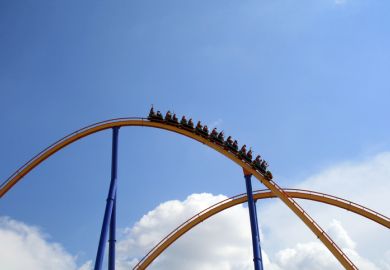The origin of the Universe holds intense fascination for the general public, and there has been no lack of popular books on the subject since the 1950s. Cosmology received a huge additional boost a few years ago with the results from WMAP, a Nasa satellite that mapped the fading afterglow of the hot Big Bang that started the Universe off 13.7 billion years ago. WMAP plus various comprehensive telescope surveys have enabled cosmologists to pin down many of the fine details of the great cosmic story with extraordinary precision.
Nevertheless, some basic questions remain. Foremost is whether the Big Bang was the absolute origin of everything, space and time included, or if anything happened before it. Professional opinions have see-sawed over the years, and today distinguished cosmologists can be found to argue for each position.
This latest account of how the Universe may have come to exist is a variant of the view that something preceded the Big Bang, and indeed, that a specific physical mechanism caused the explosion. The authors are respected scientists who have made important contributions to cosmology. However, the theory they propose is a radical departure from standard Big Bang cosmology, and still far from worked out, as the authors freely admit. In a nutshell, what Paul Steinhardt and Neil Turok suggest is that the Universe experiences a kind of cyclicity. It starts with a bang, expands and cools, the expansion accelerates until the density of matter in the Universe is exceedingly small and space is almost empty, then another Big Bang sets the cycle going once more, maybe ad infinitum. The time scale for each cycle is put at a trillion years.
There is an old model of the Universe that bears a superficial resemblance to this, in which expansion from a Big Bang is followed by contraction to a big crunch, which in fact turns out to be a big bounce, initiating the next phase of expansion and contraction. Steinhardt and Turok do away with the contractions altogether and appeal to accelerated expansion, which astronomers have discovered is already happening. A big crunch is therefore replaced by a big stretch.
The model is not an idle speculation, but based on a mechanism plucked from the esoteric realm of string/M theory, the fashionable candidate for a unified account of all physics. A key component of string/M theory is that the three dimensions of space we observe are accompanied by additional hidden dimensions. One possibility (among many being touted, often with little more justification than that it seems like a neat idea) is that our Universe resembles a three-dimensional membrane - called a brane - embedded in a four dimensional space. The brane can move in the fourth dimension. Although we do not see this extra dimension, the motion of the brane along it has physical effects within the brane, not least because in Steinhardt and Turok's theory our brane is attached to another, located very nearby, tethered by a spring like force. The force pulls the branes together to create a titanic impact, which is identified as the Big Bang. The branes then fly apart, only to be drawn together again in a trillion years or so. It is the oscillations and repeated collisions of the branes that create the cyclic behaviour within our own brane.
I enjoyed reading these strange and at times bizarre ideas, which are conveyed in an engaging anecdotal style. My main criticism of the book is that it leaves the reader asking too many questions. For example, the Steinhardt-Turok Universe is always expanding, sometimes faster, sometimes slower; it never contracts. Yet the underlying physics is time-symmetric, and one could equally have a permanently contracting universe. How the time symmetry is broken is not satisfactorily explained.
Another jarring note is that the authors succumb to the temptation to criticise opposing theories on purely philosophical grounds. The so-called anthropic principle, according to which some of the observed features of the Universe might be explained as an observer-selection effect in a patchwork of universes (known as a multiverse), is denounced with the shrill warning that it could "undermine the role of science in enlightening humankind" and lead to "poor decisions based on myths and fallacies". Strong words. Yet on the very next page the authors justify their own cosmology by claiming that the multiverse "seems extraordinarily wasteful and unpredictable in its use of space and time" - which is a non-scientific value judgment if ever I saw one.
These unseemly polemics are all part of the "Universe wars" that have been raging among cosmologists for a decade or two, and serve no useful purpose for the general reader unless they are covered in an objective and even-handed manner. But this is a minor quibble about a book with a lot of thought provoking content, well presented and relatively jargon-free.
Paul Davies is director of Beyond, a research centre for fundamental concepts in science at Arizona State University. His latest book is The Goldilocks Enigma: Why Is the Universe Just Right for Life? published by Penguin, Pounds 8.99.
Endless Universe: Beyond the Big Bang
Author - Paul J. Steinhardt and Neil Turok
Publisher - Weidenfeld and Nicolson
Pages - 304
Price - £20.00
ISBN - 9780297845546
Register to continue
Why register?
- Registration is free and only takes a moment
- Once registered, you can read 3 articles a month
- Sign up for our newsletter
Subscribe
Or subscribe for unlimited access to:
- Unlimited access to news, views, insights & reviews
- Digital editions
- Digital access to THE’s university and college rankings analysis
Already registered or a current subscriber? Login


